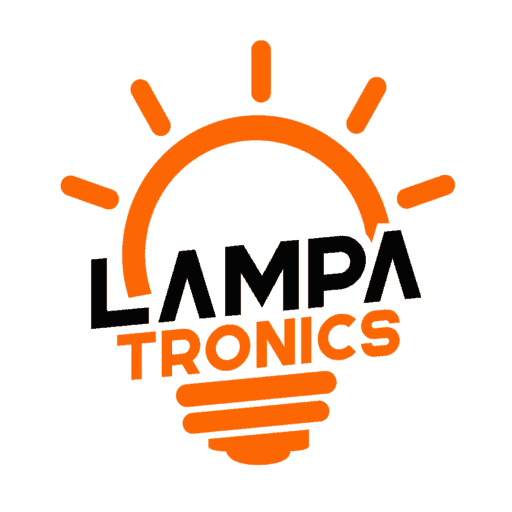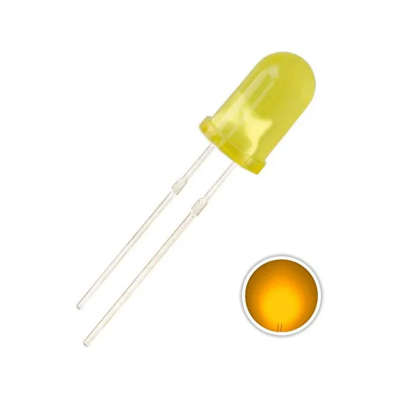LED 3mm (Blue) Transparent
Description
The 3mm Blue LED (Transparent) is a compact and highly efficient Light Emitting Diode (LED) that emits blue light when current flows through it. It’s commonly used in various applications such as indicators, displays, and decorative lighting due to its small size, low power consumption, and bright illumination.
Overview of 3mm Blue LED (Transparent):
- Package Size: 3mm (standard size for small, low-power LEDs)
- Color: Blue (emits blue light, typically around 450–495 nm in wavelength)
- Transparency: Transparent lens (often made of clear plastic), which allows the light to be emitted without much color filtering or diffusion. Some blue LEDs may come in tinted transparent housings, but they still primarily emit blue light.
- Typical Forward Voltage: 3.0V to 3.5V (typically around 3.2V for blue LEDs)
- Typical Forward Current: 20mA (standard operating current)
- Luminous Intensity: Typically 150-300mcd (millicandela) depending on the specific model.
- Power Dissipation: Low power consumption, usually around 20mA current draw.
Pin Configuration:
An LED typically has two pins:
- Anode (+): The longer leg (positive terminal).
- Cathode (-): The shorter leg (negative terminal).
For a 3mm Blue LED, the pins are the same:
- Anode (+): Connect to the positive side of the power supply or circuit.
- Cathode (-): Connect to the negative side of the circuit (ground).
Electrical Characteristics of a 3mm Blue LED:
- Forward Voltage (Vf): The voltage drop across the LED when it is forward-biased (i.e., when current is flowing through it). For a blue LED, this voltage is typically between 3.0V and 3.5V.
- Forward Current: 20mA is the typical current value used to drive the LED for optimal brightness. Going beyond the rated current can overheat and damage the LED.
Applications of 3mm Blue LED:
- Indicator Lights:
- 3mm blue LEDs are often used in electronics as status indicators, such as power indicators on devices, switches, or circuit boards.
- Displays:
- Used in seven-segment displays, digital clocks, or alphanumeric displays where the blue LED adds a striking visual appearance.
- Lighting:
- Decorative lighting in electronics, signs, or small lamps. Blue LEDs are often used in LED strips or accent lighting for creating a unique lighting effect.
- Automotive Lighting:
- Many automotive applications use blue LEDs for dashboard lights, indicator lights, or decorative lighting.
- Toys and Gadgets:
- Commonly found in toys, gadgets, and other consumer electronics where small, bright lights are needed.
- Signals and Alarms:
- Blue LEDs are used for signal lights or as part of alarm systems for visual signaling.
- Special Effects:
- Often used in special effects lighting or stage lighting where blue light provides contrast or highlights.
Current Limiting Resistor:
When using a 3mm Blue LED, it’s important to use a current-limiting resistor to prevent damaging the LED from excessive current. The resistor limits the amount of current flowing through the LED.
How to Calculate the Resistor Value:
The general formula for calculating the current-limiting resistor for an LED is:
R=Vsupply−VfIfR = \frac{V_{supply} – V_f}{I_f}
Where:
- V_supply is the voltage supplied to the circuit.
- V_f is the forward voltage of the LED (typically 3.2V for a blue LED).
- I_f is the desired forward current (typically 20mA = 0.02A).
Example:
If you are using a 5V power supply:
- V_supply = 5V
- V_f = 3.2V (blue LED forward voltage)
- I_f = 20mA (typical forward current)
Substituting the values into the formula:
R=5V−3.2V0.02A=1.8V0.02A=90ΩR = \frac{5V – 3.2V}{0.02A} = \frac{1.8V}{0.02A} = 90\Omega
So, you would need a 90Ω resistor in series with the LED. You can use a 100Ω resistor as a standard, which is a common value.
Brightness and Efficiency:
- Luminous Intensity: The brightness of a blue LED is usually measured in millicandela (mcd). A typical 3mm blue LED has a luminous intensity of around 150 to 300mcd, depending on the specific model and manufacturer. This is quite bright for such a small package.
- Power Consumption: The power consumed by the blue LED is typically quite low (in the range of 0.06W for typical current values). This makes blue LEDs ideal for low-power applications.
Only logged in customers who have purchased this product may leave a review.
- Image
- SKU
- Rating
- Price
- Stock
- Availability
- Add to cart
- Description
- Content
- Weight
- Dimensions
- Additional information








Reviews
There are no reviews yet.